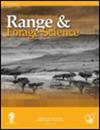倾斜天平:火如何控制安哥拉草原功能群之间的平衡
IF 1.9
4区 环境科学与生态学
Q3 ECOLOGY
引用次数: 2
摘要
火在全球热带草原生态中起着重要的作用。然而,比较植物功能群对火的季节性反应和物候时间的详细研究很少来自湿润的非洲热带草原。然而,这些信息对于了解是什么让草原保持开放,以及实现基于证据的管理和保护至关重要。2017年,我们在安哥拉易发生霜冻和火灾的土刺草草原开展了一项实验,研究了不同的火灾时间对树木、草、土刺草和草本植物的覆盖和多样性的影响。我们安装了永久的、随机的、防火的地块,每年在旱季的早期和晚期燃烧,代表了当地的燃烧习惯。功能植物类群对不同处理的反应不同,在物种水平和性能指标上表现明显。3年后,草本植物和草本植物分别受益于晚燃和不燃,而禾草植物则受益于早燃。后期燃烧抑制树木生长,禁火后不促进树木生长。燃烧样地的物种丰富度和多样性高于未燃烧样地。火灾的季节性时间决定了土刺草和草之间的尺度。安哥拉火山草原非凡的植物多样性是火的多样性和霜冻的结果,即使在没有火的情况下,草原也保持开放。本文章由计算机程序翻译,如有差异,请以英文原文为准。
Tipping the scales: how fire controls the balance among functional groups in Angolan grasslands
Fire plays an important role in the ecology of tropical grasslands globally. However, detailed studies comparing the response of plant functional groups to fire seasonality, and thus phenological timing, are scarce from humid Afrotropical grasslands. Such information, however, is crucial for understanding what keeps the grasslands open and for enabling evidence-based management, and conservation. We initiated an experiment in frost- and fire-prone Angolan geoxyle grasslands in 2017, investigating the effect of different timing of fires on cover and diversity of trees, grasses, geoxyles and herbs. We installed permanent, randomised plots with fire exclusion, annual early and late dry-season burning, representing the local burning practices. Functional plant groups reacted differently to the treatments, becoming apparent at species level and their performance metrics. After three years, grass species benefitted from late and no burning, and herbs from late burning, whereas geoxyles thrived under early burning. Tree growth was suppressed under late burning, and did not increase with fire exclusion. Species richness and diversity was higher in burnt than in unburnt plots. Seasonal timing of fire tips the scales between geoxyles and grasses. The extraordinary plant diversity of Angolan geoxyle grasslands is a result of pyrodiversity and frost, keeping the grasslands open even in absence of fire.
求助全文
通过发布文献求助,成功后即可免费获取论文全文。
去求助
来源期刊

African Journal of Range & Forage Science
ECOLOGY-ENVIRONMENTAL SCIENCES
CiteScore
4.00
自引率
14.30%
发文量
35
审稿时长
>12 weeks
期刊介绍:
The African Journal of Range & Forage Science is the leading rangeland and pastoral journal in Africa. The Journal is dedicated to publishing quality original material that advances rangeland ecology and pasture management. The journal aims to publish research of international importance from any region, but as an African journal, we are particularly interested in research from Africa and relevant to the continent. The Journal promotes both science and its application and authors are encouraged to explicitly identify the practical implications of their work. Peer-reviewed research papers and research notes deal primarily with all aspects of rangeland and pasture ecology and management, including the ecophysiology and biogeochemistry of rangelands and pastures, terrestrial plant–herbivore interactions (both domestic and wild), rangeland assessment and monitoring, effects of climate change on rangelands, rangeland and pasture management, rangeland rehabilitation, ecosystem services in support of production, conservation and biodiversity goals, and the identification and development of intensive and semi-intensive pasture and forage resources to meet livestock production needs. Articles highlighting transdisciplinary linkages among biophysical and social sciences that support management, policy and societal values are particularly encouraged. The Journal includes relevant book reviews and invited perspectives that contribute to the development of range and forage science. Letters to the editor that debate issues raised in the Journal are acceptable. The African Journal of Range & Forage Science is the official journal of the Grassland Society of Southern Africa.
 求助内容:
求助内容: 应助结果提醒方式:
应助结果提醒方式:


